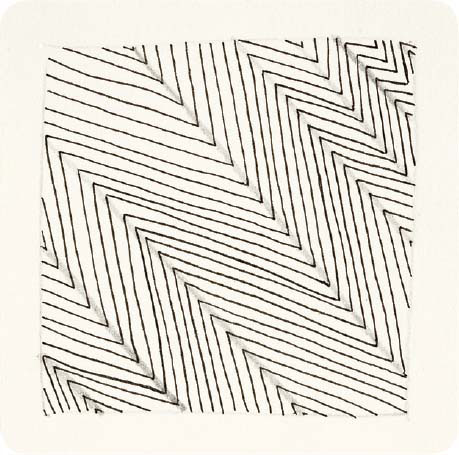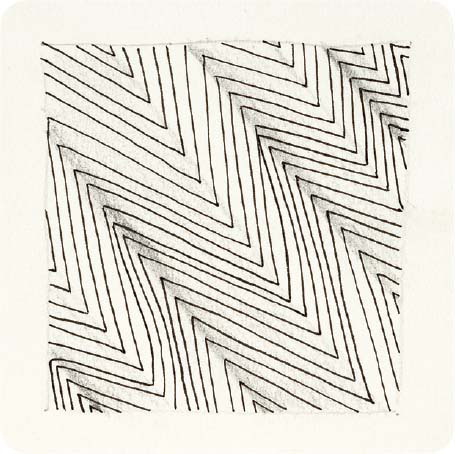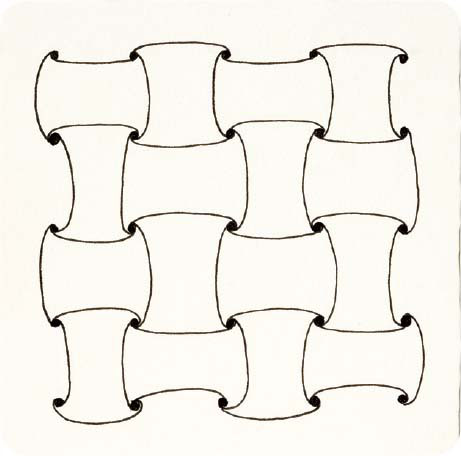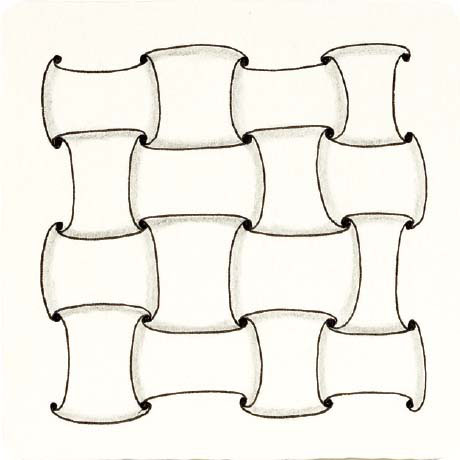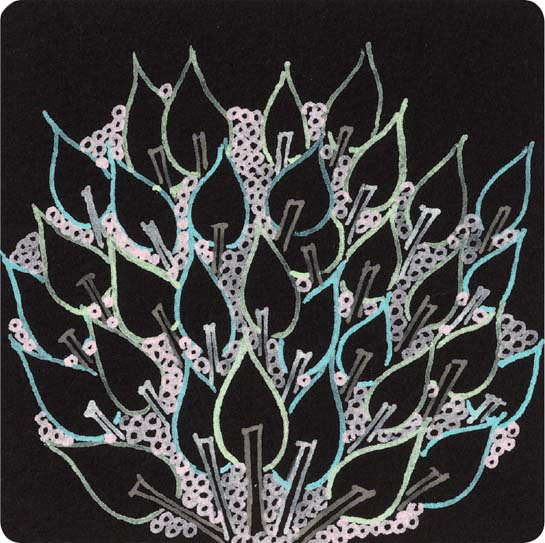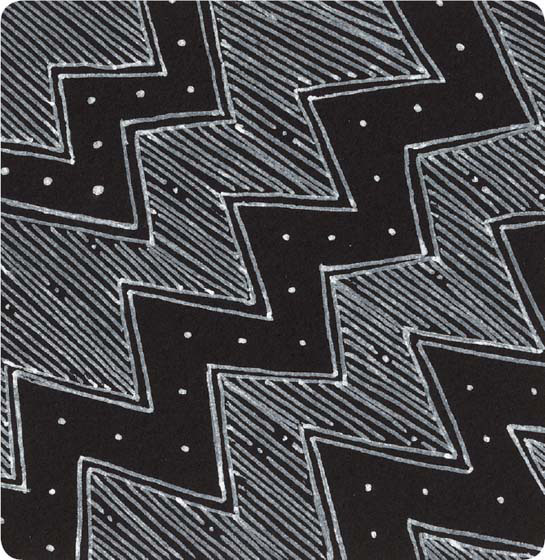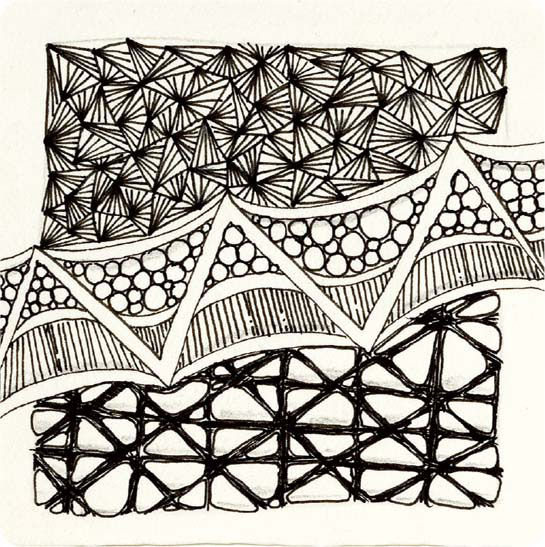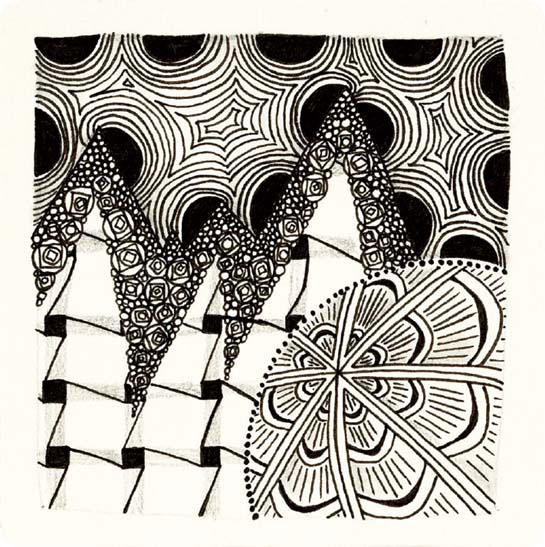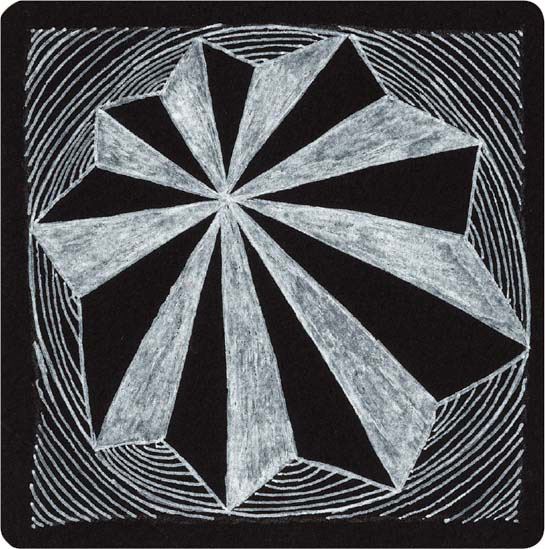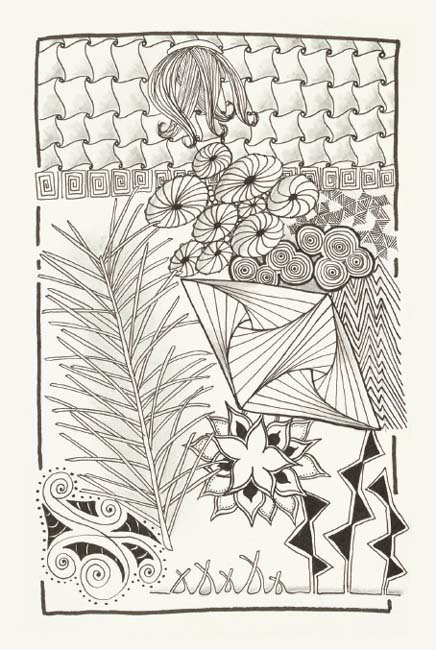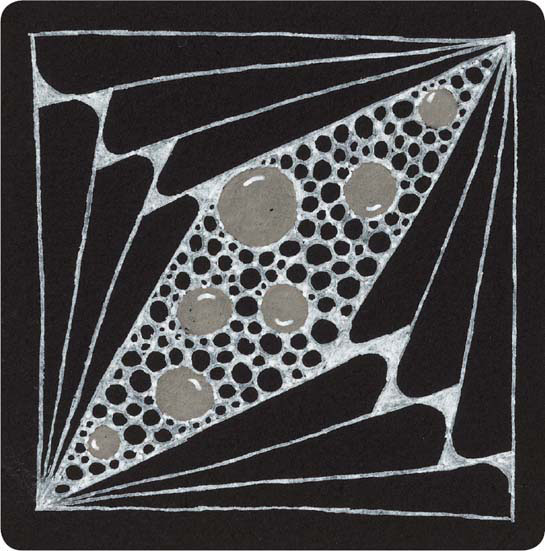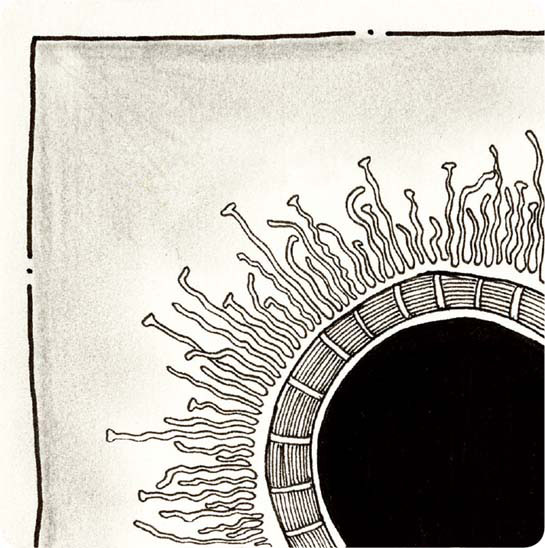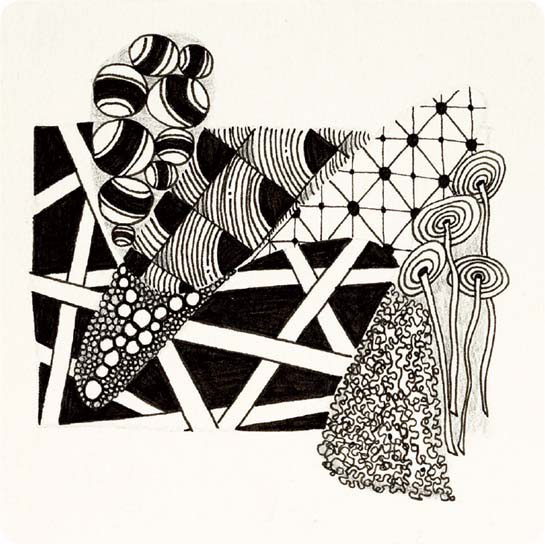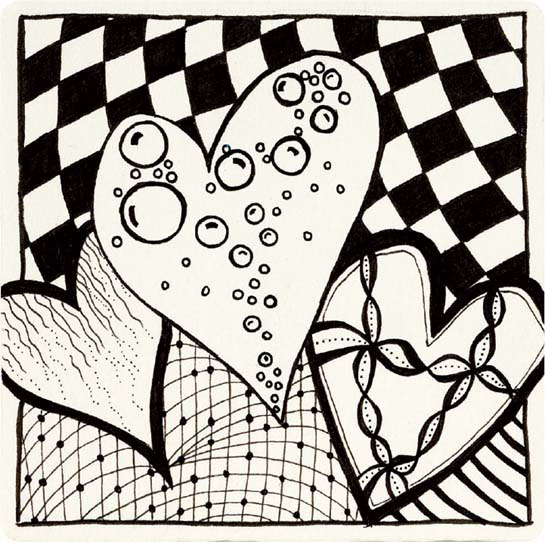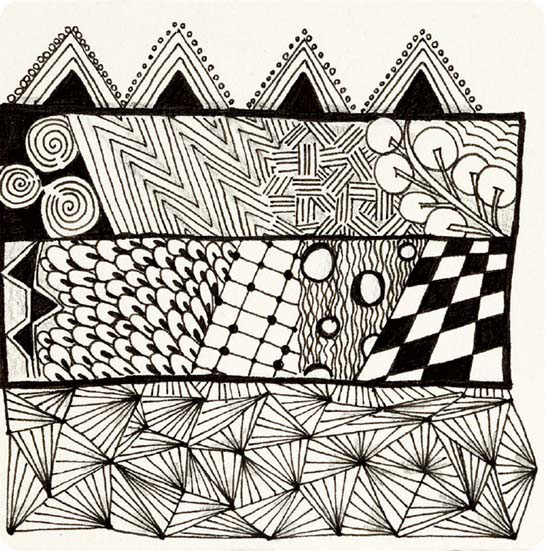Shading Zentangles
Shading is an integral part of completing your Zentangle. For the first year of tangling, I did not shade my work because I couldn’t do it “right” and it conflicted with my inner perfectionist. When I took my Zentangle® Certification Teaching class, I learned how to shade properly, and now I never do a black-and-white tangle without it. It now looks naked.
The trick with shading is to understand that it takes the area shaded into the background. It gives your work dimension. So if you want a particular spot to stand out, don’t shade it—shade around it.
That said, there really is no right or wrong way to shade your tangles. Each of us takes a different approach, and that’s part of the beauty of this art form—everything you do is OK and part of what makes your work unique. Don’t use your eraser; just go with your instinct and see what happens. You will not be disappointed!
(1) STATIC
Sakura Pigma Micron pen, graphite pencil
I’ve used a basic tangle, called Static, in the example (1). I’ve left the first example (1) blank so you can see the difference shading creates.
(2) STATIC
Sakura Pigma Micron pen, graphite pencil
In the second example (2), I’ve run my pencil in straight lines over the points of each zigzag. Looking at it carefully, you’ll see this gives a distinct appearance of peaks and troughs, not unlike drawings of mountain ranges. Comparing it to the unshaded example (1), you can see how that light use of pencil adds something quite interesting to the tangle and changes the appearance of it dramatically.
(3) STATIC
Sakura Pigma Micron pen, graphite pencil
In the third example (3), I’ve used the same theory, but only shaded lines with the points facing one direction. This small change in approach brings yet another appearance to the tangle.
Some tanglers also choose to shade one static line crosswise. Experiment and play, remembering the darker areas will fade to the background.
(1) HUGGINS
Sakura Pigma Micron pen, graphite pencil
The tangle I’ve used in this example is called Huggins and is one I use often.
Again, I’ve left the first example (1) without shading so you can get a feel for the difference shading makes and the different applications for it.
(2) HUGGINS
Sakura Pigma Micron pen, graphite pencil
In the second example (2), I’ve created a checkerboard effect by shading the weaves that go in one direction. Just looking at that example, you can see the white, unshaded weaves really pop; they appear closer to the eye than the shaded parts. This particular tangle lends itself well to this type of blocked shading.
(3) HUGGINS
Sakura Pigma Micron pen, graphite pencil
For a subtler look, check out the third example (3) and how I have gently shaded along the lines. I added the shading on the inside of the short ends of the weave. This gives the appearance that the outer sides of the weave have shading, too. It also gives the weaving dimension and makes it look like a real basket weave.
As you look through the samples and galleries in this book, some will be shaded and some will not. Really examine how we’ve done this and apply it to your own artwork. You cannot get it wrong. Play with shading until you feel comfortable, and remember that, like all art media, practice brings confidence.
Black-and-White Zentangle Gallery
TINT ON BLACK
black Zentangle® tile, Sakura Souffle pens
Black Zentangle® tiles are a relatively new product so when I bought some, I decided to test out my various pens. These are the Sakura Souffle pens and I used the Pokeleaf tangle so I could try a few different colors and see how they worked out. As you can see, they look fantastic; they become brighter as they dry. Watch out, black paper—I’m coming for you!
WHITE ON BLACK 2
black Zentangle® tile, Sakura Souffle pens
White gel pens are not made equal. Some look great on black paper, some not so much. So I tested the white Sakura Souffle pen on a black Zentangle® tile and it looks amazing! These take a little longer to dry than regular gel pens, but I also think the result is superior to the countless others I’ve tried.
COUNTRY TWANG
Sakura Pigma Micron pen, graphite pencil
The official tangle across the middle of this piece, Twing, inspired the name of this tile. My parents are big country music fans so it seemed apt, and I think the two tangles on either side complement their personalities—simple yet complicated! Love you Mum and Dad!
MOUNTAIN
Sakura Pigma Micron pen, graphite pencil
This tile started with me playing with strings, and I wanted to see how I could combine curved and straight lines into the string effectively. Mountain was the outcome.
GNEISS
black Zentangle® tile, white gel pen
Gneiss is an official tangle and in this particular piece, uses a black Zentangle® tile and a white gel pen. The strength of this piece is how well the white Sakura Gelly Roll pen looks on the black tile; the effect is fantastic despite having done nothing more than reversing the coloring of a regular Zentangle (black ink on white tile).
ANGELS VS. RANGERS
Sakura Pigma Micron pen, graphite pencil
Here is a tangle that began while watching television, and obviously while I was watching baseball. Although I wasn’t consciously thinking about it, it’s interesting that the raindrop shape on top looks like angel wings ( L.A. Angels) and the tangle around the lower raindrop shape looks like a ranch fence (Texas Rangers)! Who says Zentangle doesn’t creep into our subconscious thinking?
(For the record—I’m a Yankees fan through and through.)
MUSINGS
Sakura Pigma Micron pen, graphite pencil
I wish I could tell you a story about this particular journal page, but it was one of those pages that simply happened. I sat watching television with my journal, started tangling, and this is what came out. No rhyme, no reason—but a great journal page nonetheless.
MOONSHINE
black Zentangle® tile, Sakura Souffle pens
Another black tile with white ink, but this time adding the black Souffle pen (which is more gray) for some effect without stepping away from the black-and-white premise. These Sakura pens take a little while to fully dry, but I think you’ll agree they are worth the wait!
YOU ARE MY SUNSHINE
Sakura Pigma Micron pen, graphite pencil
Quabog is an official tangle that you don’t see used a lot, but I like to use it, especially when I am depicting the sun. The song “You Are My Sunshine” is such a sweet tune, it seemed like an appropriate title for this piece.
TODAY
Sakura Pigma Micron pen, graphite pencil
Today is a Zentangle I must have created when I was having a chaotic day—the busy, unbalanced nature is obviously reflecting my state of mind! That’s OK, we all have days like this, and it’s definitely OK when our Zentangle art reflects that!
FALLING IN LOVE
Sakura Pigma Micron pen, graphite pencil
There’s nothing more wonderful than love, is there? I love heart shapes, and although I am not the most romantic girly-girl in the world, I am grateful for love every day. This tile is a simple one, and being about love it makes me think of my husband, Michael, who embodies unconditional love. I’m so lucky.
SEPTEMBER BLUE
Sakura Pigma Micron pen, graphite pencil
Our seasons are a little “upside down” here in Australia, and it’s September when we start seeing the first blue skies of springtime. I know many of us live every day through winter waiting for that first glimpse of September blue sky.


